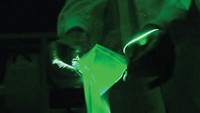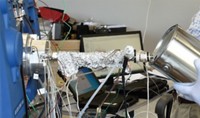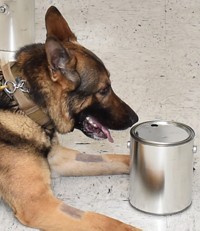Advertisement
Grab your lab coat. Let's get started
Welcome!
Welcome!
Create an account below to get 6 C&EN articles per month, receive newsletters and more - all free.
It seems this is your first time logging in online. Please enter the following information to continue.
As an ACS member you automatically get access to this site. All we need is few more details to create your reading experience.
Not you? Sign in with a different account.
Not you? Sign in with a different account.
ERROR 1
ERROR 1
ERROR 2
ERROR 2
ERROR 2
ERROR 2
ERROR 2
Password and Confirm password must match.
If you have an ACS member number, please enter it here so we can link this account to your membership. (optional)
ERROR 2
ACS values your privacy. By submitting your information, you are gaining access to C&EN and subscribing to our weekly newsletter. We use the information you provide to make your reading experience better, and we will never sell your data to third party members.
Analytical Chemistry
Finding Signs Of Life With Ion Mobility Spectrometry
Disaster Response: Portable technique identifies chemicals in human breath that could signal that people are trapped inside a collapsed building
by Erika Gebel
January 10, 2013

With every breath, people exhale a plume of chemicals. Now researchers have developed a method to quickly and easily detect this signature of life with a portable device (Anal. Chem., DOI: 10.1021/ac302752f). The team hopes that the approach can help firefighters and other first responders find people trapped inside rubble after earthquakes, terrorist attacks, or other calamities.
Dogs are the first choice for finding trapped victims, says Wolfgang Vautz of the Leibniz Institute for Analytical Sciences, in Dortmund, Germany. But the pooches need frequent breaks and can confuse dead bodies for living people. Vautz and his colleagues developed an alternate strategy in which first responders would snake a long tube into rubble to collect samples of air. They would then look for a pattern of chemicals in the samples that would indicate a person is alive and breathing under the debris.
The team thought ion mobility spectrometry would be ideal because the spectrometers are portable and have already found use with human breath, identifying metabolites related to disease, such as diabetes and lung cancer. The instruments ionize chemicals and then, using an electric field, propel the ions through a chamber. The time it takes an ion to pass through the chamber relates to its size and shape, Vautz says, allowing scientists to identify chemicals.
To test the method, researchers simulated a void in a collapsed building with a refrigerator-sized glass-and-polycarbonate box. Ten volunteers spent six hours each in the chamber; every 20 minutes, the scientists withdrew 8 mL of air through a tube. The scientists first used gas chromatography on the samples to separate the chemicals. They then fed the gas fractions into an ion mobility spectrometer. The analysis process took about three minutes per sample, Vautz says.
The researchers compared the gas chromatography and ion mobility data to those in a database and identified 12 chemicals, including acetone and benzaldehyde, known to be present in human breath. The concentration of these chemicals was higher in the box than in an air sample taken outside the laboratory. The researchers concluded that searching for high levels of these 12 chemicals could help rescue workers find evidence of a living person in a hidden space.
Jörg Baumbach of the Technical University of Dortmund, in Germany, who uses ion mobility to diagnose disease, is impressed by the speed and sensitivity of the approach, but thinks the researchers need to test it in the field. A laboratory is very different from a disaster site, he says. Vautz agrees and says there are plans to distribute the device to firefighters to see how it performs in a real-world setting.





Join the conversation
Contact the reporter
Submit a Letter to the Editor for publication
Engage with us on Twitter